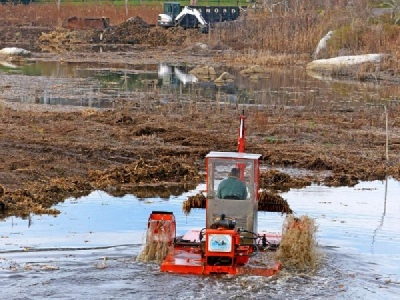
Posted on December 1, 2016
By Catherine Hewitt, thewesterlysun.com
A dredging project will soon begin in Charlestown Breachway that will restore salt marsh habitat damaged by sea level rise in Ninigret Pond and improve navigation in the breachway channel.
Salt marshes are important because they serve as an ecosystem for fish and birds and act as a natural buffer to coastal storms. With rising ocean levels, many Rhode Island salt marshes have begun to “drown in place,” converting to mud flats or open water.
The Coastal Resources Management Council has collaborated with several other groups to design a project that will use sediment dredged from the channel as material to increase the elevation of the Ninigret marsh.
Funding for the project is provided by a $3.25 million grant from the U.S. Department of the Interior that was awarded in 2012 after superstorm Sandy. The grant will also cover planning for two similar projects at Quonochontaug and Winnapaug ponds.
During the first week of December, J.F. Brennan Company, Inc., an environmental services and marine construction firm that specializes in waterway remediation, will begin work on two sedimentation basins within the breachway channel.
Most of the dredged material will be piped to the marsh west of the channel. Some of the material will be discharged east of the breachway in the intertidal area along the shore and will help renourish the beach.
Dredging is scheduled six days a week, 24 hours a day until the project is completed, with an anticipated end date in late January.
Excavation and grading of the salt marsh will begin in mid-December and is expected to be complete in mid-April.
The newly elevated marsh will be seeded in mid to late spring to jumpstart the regrowing process.
The CRMC partnered with the following organizations to fund, design, permit and implement the project: Town of Charlestown; Salt Ponds Coalition; R.I. Department of Environmental Management, Division of Fish and Wildlife; U.S. Fish and Wildlife Service; Save the Bay; Narragansett Bay National Estuarine Research Reserve; F uss & O’Neill; J.F. Brennan Company, Inc.; and, the U.S. Environmental Protection Agency, Atlantic Ecology Division.
Source: thewesterlysun.com





